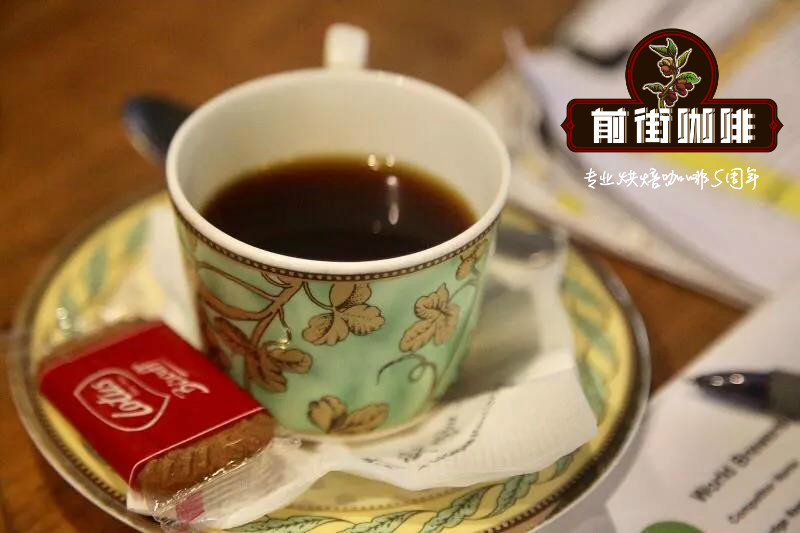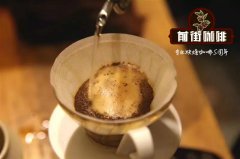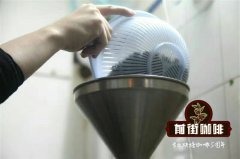Do you know what 90 + coffee is? Is it a bean score or not?

"90 +" does not refer to all coffee with a rating of more than 90 points, it refers to a top range of 13 flavors. Sometimes they haunt different manors, and they have different taste characteristics. When processing, baristas will separate these coffees according to variety, climate and fresh time, and taste them one by one. They are like works of art that tend to be perfect. Baristas take great pains to give them the best taste and present them in the most perfect posture.
The pursuit of "90 +" for the ultimate flavor is very admirable, and their sustainable development model and environmental protection operation are also the learning goals of many coffee producers. Since the company was founded in 2006, the young company has made them known to coffee industry people all over the world in just a few years. The coffee series that made its debut in 2007 was immediately regarded as a precious show by coffee experts.
Excellent quality
Joseph Brodsky, the founder of Ninety +, discovered early that all the world's high-quality raw coffee beans originated in Ethiopia, and its different flavors of many different varieties are no less than 10, 000 grapes into 1 million different wines. Ninety percent of the raw beans are from the original varieties of Ethiopia, including the Manor of Panama (Gesha) is also the original variety of Ethiopian heirloom (Heirloom) transplant. The processing process is the specialty of 90 +, will separate these coffee according to variety, microclimate, fresh time one by one, taste one by one, specially design the processing method for each taste, achieve a kind of taste characteristic, just like the big brand design, study attentively, spend painstaking efforts to complete a handicraft that is close to art. Natural products go through a lot of refinement and improvement, and finally reach the most beautiful posture to present the content to everyone.
Now many stores are after Ninety Plus (90 +) coffee, but what is Ninety Plus (90 +) coffee, how to choose, how to buy, when you buy 90 + coffee, how to taste, how to introduce to others, the following is a brief introduction of 90 + coffee, to help you better choose good coffee.
Joseph Brodsky founded Ninety Plus (90 +) in 2006, and Joseph began his journey when the Geisha species appeared in Panama in 2003 and 2004, but when he didn't find the result he expected in Panama, he had another idea that there may still be untapped potential among the more than 10, 000 varieties of coffee in Ethiopia. In order to ensure quality, 90+ adopts a cooperative model with local manors, from planting, sampling and harvesting to subsequent processing and cup testing. 90 + exclusive Profile Processing ensures that each coffee bean has a unique and stable flavor trend and quality, while 90 + coffee is unique in the market with the marketing method like high-end red wine.
The nomenclature of 90 + beans is completely different from that of general boutique beans. First of all, unlike the usual names of producing areas and manors, each bean is named according to its flavor, for example, the famous Nekisse is originally intended to be taken from Shakisso's nectar. The name of 90 + usually starts with the concept of flavor, then the name, and then the choice of producing areas and cooperative farms. In this respect, it is very different from the general boutique beans and is a brand with boutique management style.
It is not difficult to find that usually beans have the letters N, H or W, such as Ethiopian Yiagacheffe G3 N, which is commonly seen in the market, where N stands for Natural. H = Honey (honey treatment) and W = Washed (washing). Here, 90 + also has a different view, they think that rather than using the method of treatment to distinguish beans, it should be distinguished by the trend of flavor. Generally speaking, each treatment of beans will have a more representative flavor, such as:
Insolation: unrestrained fruit aroma
Honey treatment:: the sweetness is outstanding.
Washing: the flavor is relatively clean
However, 90+ believes that sometimes there will be the same flavor trend under different treatments, for example, the flavor performance of beans treated with honey may be similar to that of washed beans, so they have introduced three basic flavor labels of N2, H2 and W2, which are distinguished by the intensity of fruit aroma and taste:
W2: (Low) low fruit tonality, emphasizing brightness, acidity and floral aroma
H2: (Moderate) moderate fruit tonality, emphasizing sweetness, fruit taste (non-aroma) and tea flavor
N2: (High) strong fruit tonality, emphasizing unrestrained flavor, sweet and sour, jam and dried fruit.
In 2011, in order to improve the stability of raw beans produced in Panama during the drying stage, Joseph developed a solar drying system inspired by a wood drying chamber with the University of Wisconsin in the United States, and named this exclusive treatment Solkiln (SK). Of course, the beans after this special treatment are very expensive, and because of the space they can hold, the output is very small.
Finally, 90 + beans also have a scoring system different from the general 100 points, mainly because 90 + beans should be scored more than 90 points on the cup test, and their grades are based on three factors: flavor, cost and output:
Level 7: special flavor, meticulous and impressive
Level 12: besides being impressive, it needs to be topical.
Level 21: a rare Level 7 with a flavor that usually surpasses that of Level 7.
Level 39: Level 12 with low yield has a higher flavor than Level 12.
Level 95: at present, the highest grade, from dried incense to the entrance, has a great change and impressive, and the output is very rare.
ETHIOPIA,SIDAMO,Drima Zede
Sun West Dharma
Ninety + candles
Guojia: Ethiopia Ethiopia
Production area: 90+SNNP, Sidama (Sidamo)
Sea pull: 1750-2000 meters
Treatment method: sun treatment method Natural Process
Variety: Ethiopian native species Ethiopian Heirloom
Shallow baking Light Roast
Wind: floral aromas, nectarines, tropical fruits, blackberries, blueberries, plums, cream, cinnamon
Acidity: medium to high
Important Notice :
前街咖啡 FrontStreet Coffee has moved to new addredd:
FrontStreet Coffee Address: 315,Donghua East Road,GuangZhou
Tel:020 38364473
- Prev

How to distinguish between washed and sunburned coffee beans?
A successful cup of coffee should be treated strictly from the beginning of a raw coffee bean. the treatment methods of raw coffee beans can be divided into sun-drying method and water washing method, which method should be used according to the local climate, environment and the characteristics of coffee beans. After the raw coffee beans are processed, they can be roasted and ground, but a cup of coffee is decided mainly on the freshness of the coffee beans.
- Next

Where does the best coffee in the world come from? How about Chinese Hainan coffee? Present situation of coffee in Hainan
Professional coffee knowledge exchange more coffee bean information Please follow the coffee workshop (Wechat official account cafe_style) mention Hainan, what do you think of? Sunshine and beach, coconut wind and sea rhyme? How many people know that Hainan is also rich in coffee, and the quality is not inferior to the world-famous South American coffee? At the beginning of the 19th century, Xia Nanyang has become a choice for most people in Hainan to make a living.
Related
- Guji coffee producing area of Guji, Ethiopia: Humbela, Shakiso, Wulaga
- What is the most expensive variety of Qiloso in BOP multi-variety group?
- How to store the coffee beans bought home?
- Why are Yemeni coffee beans so rare now?
- Ethiopian Sidamo all Red Fruit Sun Sun Santa Vini Coffee beans
- SOE is mostly sour? What does it mean? Is it a single bean? what's the difference between it and Italian blending?
- Is Italian coffee beans suitable for making hand-brewed coffee?
- How to choose coffee beans when making cold coffee? What kind of coffee beans are suitable for making cold coffee?
- Just entered the pit to make coffee, what kind of coffee beans should be chosen?
- Can only Japan buy real Blue Mountain Coffee? What are authentic Jamaican Blue Mountain coffee beans?

